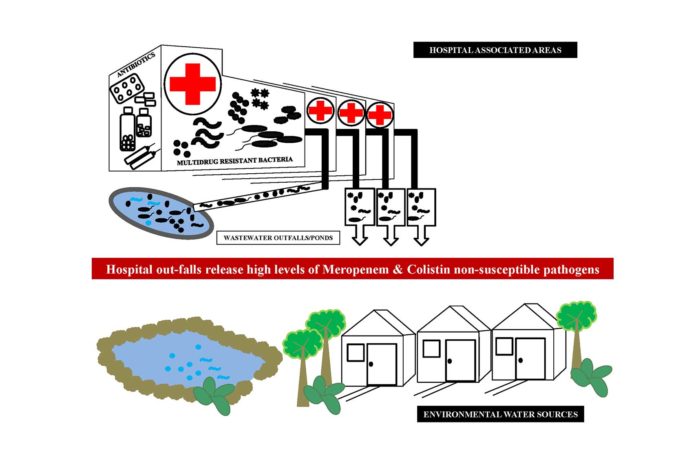Scientists from the National Institute of Biomedical Genomics (NIBMG), Kalyani, detected the presence of drug-resistant bacteria in water samples collected from hospital and hospital-associated areas (HAA) of West Bengal. Scientists found that HAA bacteria were resistant to drugs like Colistin, Meropenem, and Amikacin to a different extent.
Indiscriminate use of antibiotics has resulted in a catastrophic increase in the levels of antibiotic resistance in India. Hospitals providing critical care to patients with bacterial infections have become a reservoir of multidrug-resistant (MDR) bacteria. MDR bacteria are challenging global health care systems.
The NIBMG scientists collected water samples from 11 hospitals and four environmental sources belonging to 5 most-densely populated districts of West Bengal.
The team isolated about 84 bacterial strains, which were characterized, and the predominant species included disease-causing Gram-negative bacteria Escherichia coli, Klebsiella pneumonia, and Acinetobacter baumannii.
India has a high burden of bacterial diseases, and figures among top countries where misguided overuse of antibiotics is rampant. The usage of broad-spectrum penicillins has emerged as a significant challenge for resource-constrained health-setting of the country.
Medical practitioners still use antibiotics like carbapenems and polymyxins as last-resort antibiotics in the treatment of most human infections. Drugs are also indiscriminately used in the animal production industry as growth promoters. The emergence of drug-resistant bacteria has a significant impact on human health in developing nations.
Thus, understanding the bacterial population distribution and the relative role of hospitals in spreading drug-resistant is essential for policy interventions to be put in place in hospitals, and is imperative for designing better treatment strategies.
The study is published in the International Journal of Environmental Research and Public Health.
